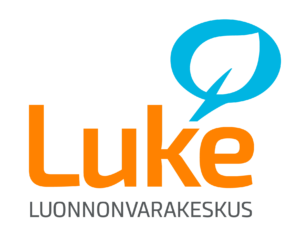Adaptive and
resilient
bioeconomy
The capacity of fields, forests, and waterbodies to produce food, raw materials, health and wellbeing for us and future generations, as well as keeping the wheels of the economy turning, depends on the wellbeing of nature. Even so, we use natural resources more than is sustainable within the Earth’s carrying capacity.
Our actions are damaging the wellbeing of nature and our own wellbeing
Climate change, biodiversity loss, urbanisation, consumption that wastes natural resources, the contamination of the environment, the lack of variety in production methods, and invasive alien species are examples of some of the challenges we face in our times.

Luke’s Adaptive and Resilient Bioeconomy research programme studies how new solutions for the wise use of natural resources can be put into practice sustainably.
Forecasting future changes and finding ways by which to manage risks form an important part of our research. It may not be possible to stop changes that are already underway. In such cases, we look for ways to control and adapt to them.
The tide cannot be turned with the help of legislation alone. We look for ways to increase different actors’ opportunities and will to promote sustainability, and their means for doing so.
The loss of species and habitats, as well as the loss of genetic diversity in species, are some of our most critical challenges. Our research programme promotes measures that increase biodiversity as part of the sustainable use of natural resources.
Meri Kallasvuo, Programme Director
Adaptive and Resilient Bioeconomy
Insect pests and pathogenic fungi, as well as extreme weather phenomena, cause significant damage. In addition to increasing the risks they cause; climate change introduces a whole host of new risks into the picture.
Invasive alien species can also spread through international trade routes and constitute a serious threat to Finland’s nature and natural resources.
We investigate the distribution of pests, the extent of the damage they cause, and how to safely control and eradicate them. It is important to make primary production more pest-resistant and thus secure food production, but without reducing biodiversity.
The Covid-19 pandemic has underscored the significance of nature’s recreational value. The number of visitors to national parks has greatly increased, and people are spending more time in their local forests and parks.
Finnish nature also provides a good framework for nature-based business operations like nature tourism and rehabilitative activities.
We study the scope of this recreational use, the people engaged in it, the cultural and health benefits provided by nature, and their economic values. The results are put to use in the development of areas fit for recreation. The objective is to increase wellbeing in society and distribute it more equally.
Despite this, not all of us have equal access to nature. In such cases, virtual nature may make the benefits of nature more accessible.
We produce data and aim to expand appreciation of virtual nature’s impact and its business potential.
Nature and the services it offers – such as the use and management of forests, fields, game and fish resources, and the recreational opportunities and scenic values of nature as well as its protection – entail conflicting wishes and several sustainability goals.
We work to ensure that disparate objectives and the various forms of using natural resources can be optimally reconciled.
We study the effects of various steering mechanisms, their pros and cons, and how to justly mitigate the disadvantages. We develop solutions that also encourage independent changes in activities and operations.
We produce data on how people value the tangible and intangible services of nature. By identifying these values, we can anticipate potential conflicts.
Sustainability scientists speak of sustainability transitions – fundamental transformations that touch all areas of life. This is what is required for both people and nature to be in good health.
It is important that a solution to one problem is not a cause for a new problem elsewhere. The solutions must be feasible, regionally equitable and tailored for each situation.
We examine the combined effects that various solutions have on the wellbeing of people and nature, and the economy. This allows us to understand the big picture and find remedies which, at their best, solve a variety of problems, locally as well as globally.
What would the world look like if natural resources were used sustainably? Our goal is to reconcile different needs to ensure the wellbeing of nature, secure the supply of food and energy, and ensure that regions and communities retain their ability to function in a changing world.





